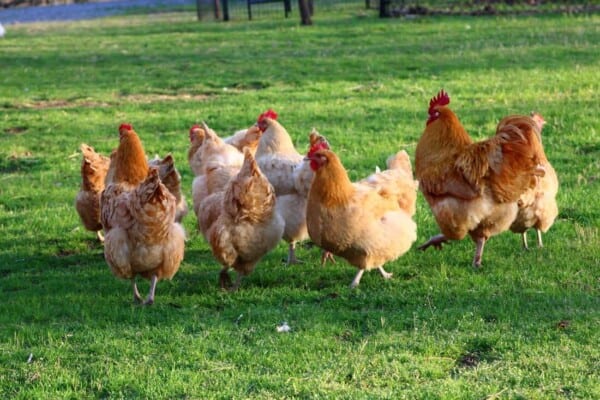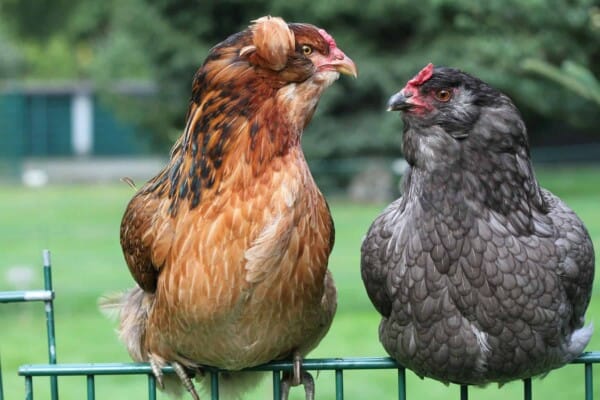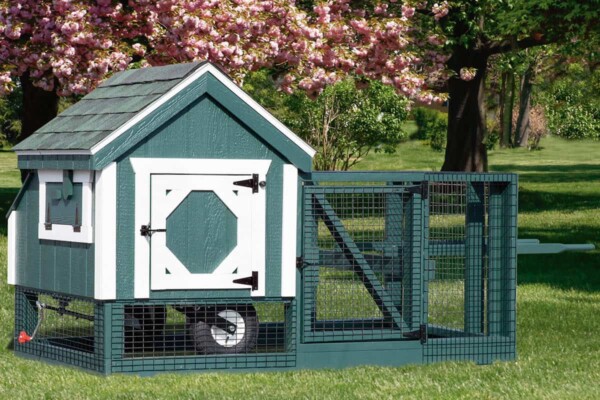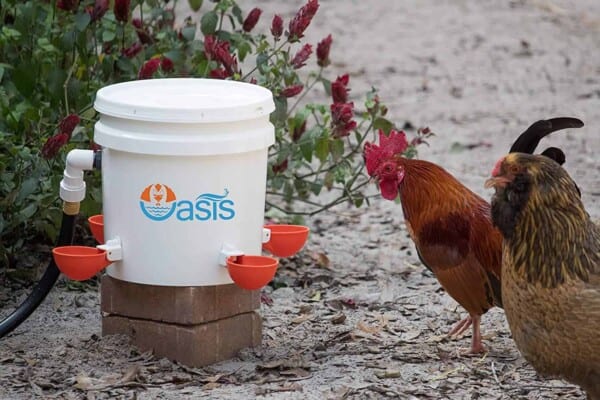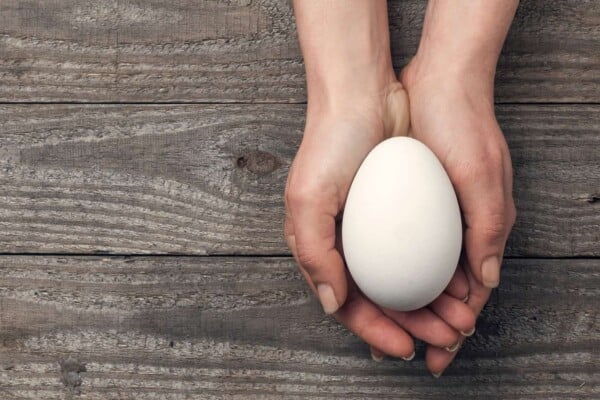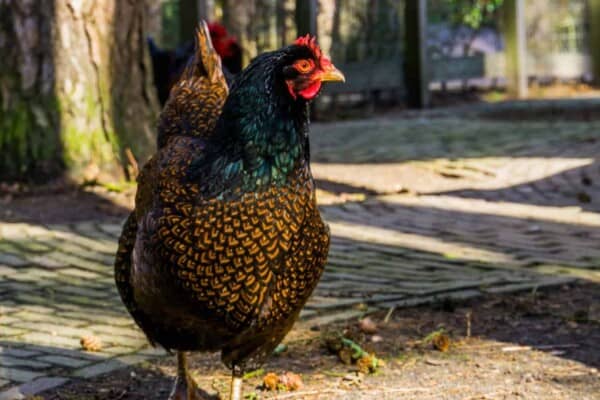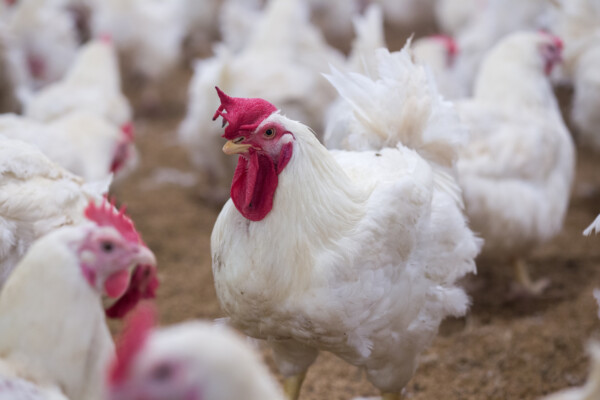There are plenty of awesome chicken breeds out there, that you surely need to check out if you’re just thinking of starting your own coop now. Each breed has its own interesting characteristics and pros and cons, which you need to keep in mind before you make your final decision.
With that being said though, some breeds are definitely better than others, and for today we would like to cover one of our personal favorites right here, aka the Silkie chicken breed in all of its glory.
This breed has been appreciated for a very long time now due to its unique appearance and unusually furry feathers, but there is a lot more to it than meets the eye.
So, in this guide we will be show you everything that you need to know about the adorable Silkie chickens and we will top it all off by telling you exactly why you should consider adding them to your coop next.
So, let’s not dwindle about any longer and instead hop right into a brief introduction to the Silkie chickens which starts off with a simple description of:
The Silkie Chickens Appearance
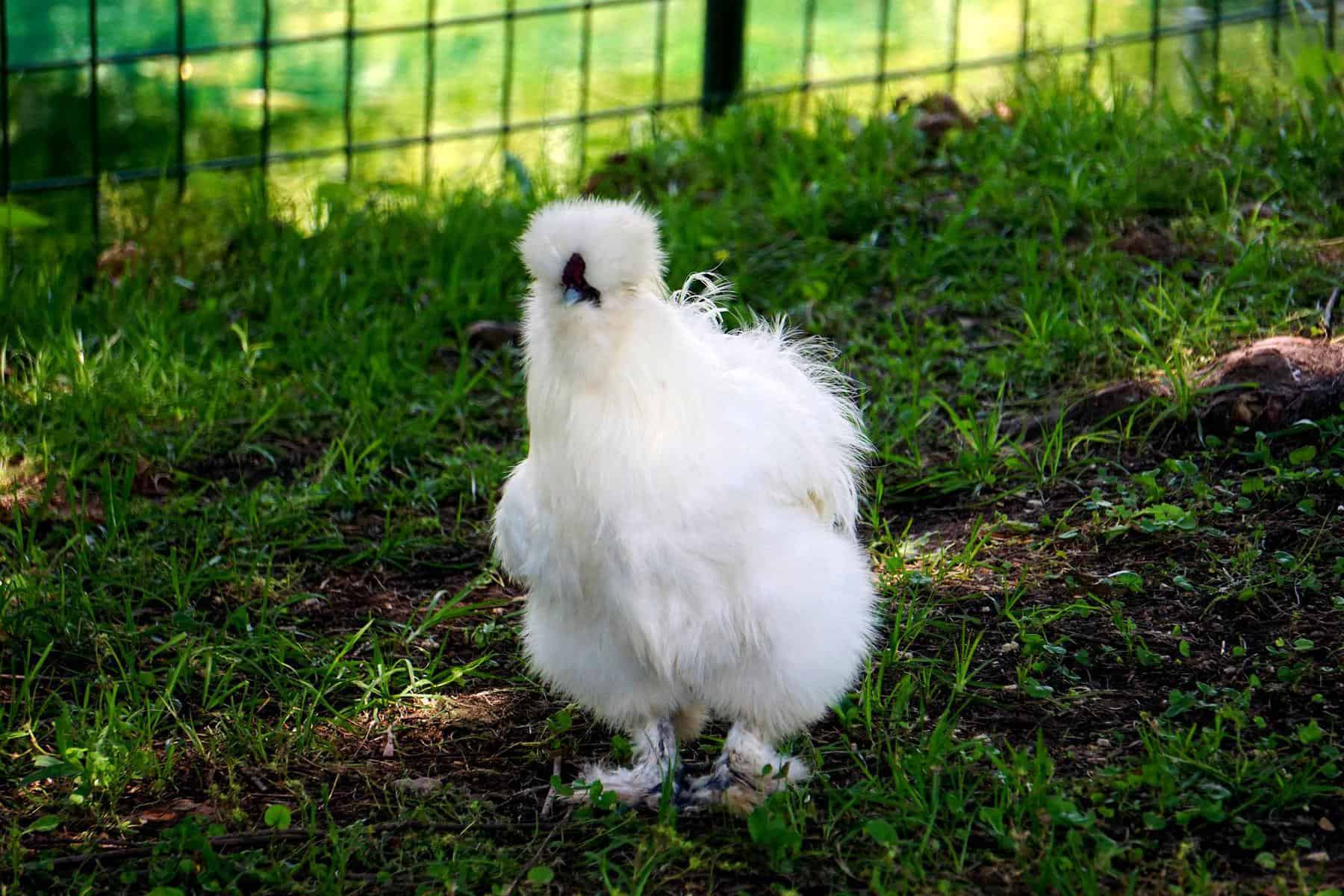
The cool thing about Silkie chickens is that once you see them with your own eyes you can never mistake them for another chicken breed again. They are some of the most easily recognizable chicken breeds on the market, and a lot of that has to do with their almost fur-like feathers.
They look like furry chickens for the most part which is not something you see very often in public. On top of that, their bodies are unusually plump and broad, with their chests popping out harder than most any other chicken breeds out there.
As far as their legs are concerned, you are looking at a pair of cute waddles that are quite far apart from one another, for the sake of giving them the extra balance, that they need to keep themselves stable at all times.
Their heads, by far their most easily recognizable feature, can be spotted right away due to the fact that they literally look like a sort of crested pom poms that again, no other chicken breed seems to have out there.
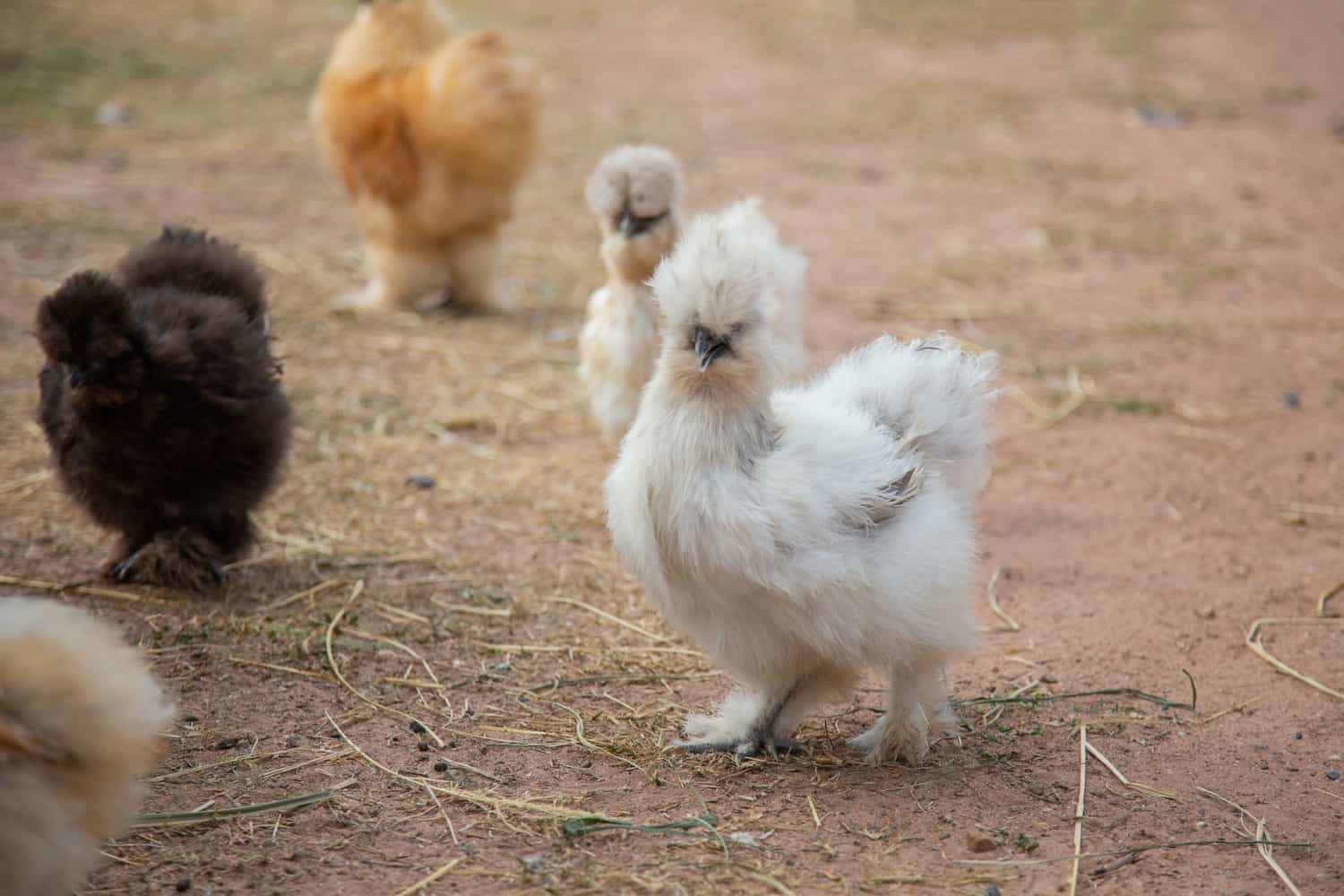
As far as their comb is concerned, it is typically walnut-shaped although it is also a very good indicator of the purebred part of the chicken, since a purebred will always have a mulberry or dark red comb while a lesser chicken will have a brighter red comb instead.
While the great majority of Silkie chickens have a beard to top off their looks, there are plenty of them that are also non-bearded, but the one thing that they all seem to have is the charcoal black eye color, that can instantly be spotted even from a distance.
Another characteristic trait of the Silkie chickens can be spotted at their earlobes, as they are actually light blue in color and as such, they stand out quite a lot.
Underneath their feathers you might be shocked to hear that their skin is black, and not only that but their whole bodies, with the exception of their blood and feathers is black.
That’s right, we are talking about their skin, their muscles, pretty much everything including their bones, they’re all black colored. If that’s not unique then we don’t know what the even means anymore.
How Much Money do Silkie Chickens Cost?

If you’re interested in them for their uniqueness and their beauty alone, then you may already be asking how much one such chicken will cost you.
The good thing about them is that you can find them pretty much everywhere ,which is why they are not exactly the most expensive chickens to get your hands on.
For the most part, you will be happy to hear that the typical Silkie chick will cost you around $3 to $10 each, but if you want to buy an adult hen or rooster instead you will have to shill out anywhere between $15 to $50 each.
How Much do Silkie Chickens Weigh?

As far as their general size and weight is concerned, Silkie chickens in the US do appear to be a tad bit smaller than the Silkie chickens from Europe, and that is mostly due to different genetics and whatnot.
As such, the typical US Silkie chicken will weigh anywhere between 2 to 3 pounds, if you’re talking about a rooster, and if you are talking about a hen, then you’re looking at a 1.5 to 2 pounds chicken right here.
There will always be some anomalies to say the least as some chickens may weigh a lot more, or they may weigh half of that in their adulthood. The only thing that we can say about that is that the closer you are to owning a purebred, the more likely you are to have a chicken of that size.
What Color Varieties Do Silkie Chickens Come In?

Yet another great part about owning or purchasing a Silkie chicken is the fact that you have a plethora of different colors to choose from, which will definitely make your coop look a lot more unique and lively, the more you mix and match the chickens you have there.
Despite this though, in total you will only have 8 colors that you can actually go to a competition with, and they are the following:
- Black
- Blue
- Gray
- Buff
- Self-Blue or Lavender
- Splash
- White
- Partridge
There are quite a few more colors that the Silkie association is trying to get accepted by the APA, but sadly this doesn’t seem really feasible for now. Even so, there are a lot more official colors that are accepted than there are for most other chickens which is always great to see.
How Do Silkie Chickens Behave?
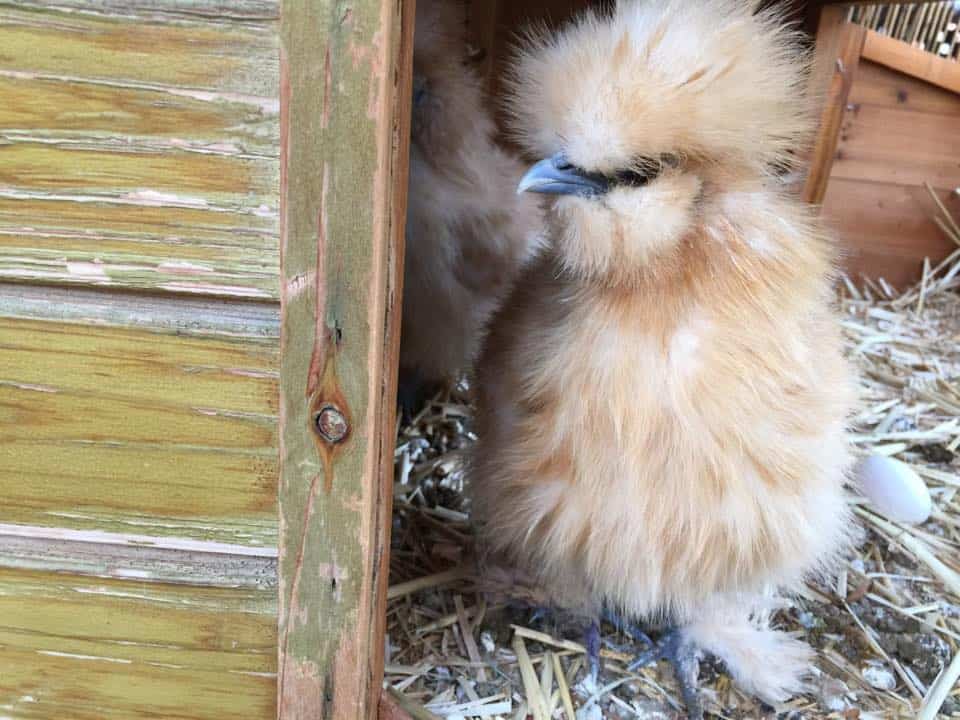
Personality-wise you are looking at one of the calmest and most peaceful birds that you could get your hands on right here. They are very much so free birds though, that just can’t get enough of the free ranging life, which is why you’ll need a lot of space to keep them happy.
At the same time, they are very easily taken down by predators and they don’t handle pressure well, so you will need to invest quite heavily on supervision and protection to keep them safe. The moment a single predator enters your coop you are pretty much done for, as no Silkies will be able to escape it, due to them not being the fastest nor the smartest birds out there.
You may also want to invest into a fully enclosed area and proper fencing to keep them out of harm’s way, especially so when talking about haws for that matter as they can easily scoop them off of the ground since the Silkie chickens don’t necessarily have the best vision due to their furry head feathers.
The standard Silkie chicken is pretty much one of the most docile chickens breeds your money could get you though, but this also does work against them often times, as they can easily end up getting bullied by any other more dominant chicken breeds you may have in your coop.

The Rhode Island Red for example is notorious for attacking Silkie chickens and in some cases, it can even end up pecking them to death just to assert dominance. As such we recommend that you mix them up with several other docile breeds such as the Cochin or the Polish chicken breeds to avoid any serious altercations.
Silkie chickens make for great pets due to how easily they can get attached to humans, they absolutely love to be held on your lap, and more often than not they will trust you so much that they will just take a nap the moment you give them a few pats on the head. They love being carried around and you will see them chase you around the whole coop the moment you enter it to give them food or water.
We have personally never even heard of an aggressive Silkie chicken, more often than not you will hear about them being stepped on or being hurt, because they get too close to humans, and because of how non-confrontational they are you will not have to worry about them attacking you or any other chicken around the coop anytime soon.
You will also thoroughly enjoy petting them and stroking their heads thanks to their furry feathers and the more you do it the more attached the Silkie chicken will get to you.
How Many Eggs Can I Expect from Silkie Chickens?
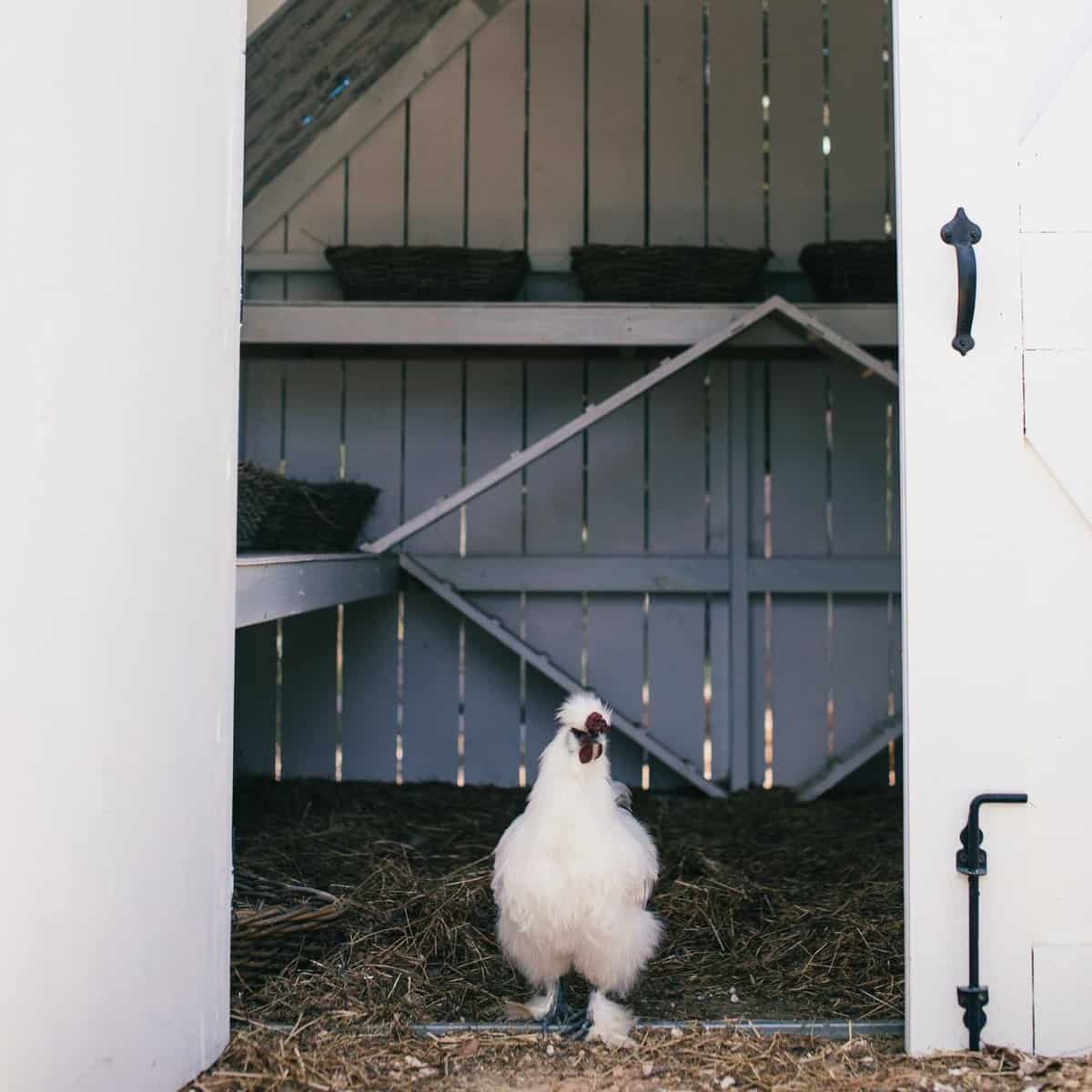
This is sadly the only real problem that you will ever find with Silkie chickens, and it is not the one that most of us thought we’d have with it when we first got one from the market.
We expected these to be very good egg chickens since they are so small and typically, if a chicken is not particularly large that means that that’s not a meat chicken, and that you’re looking at an egg laying chicken instead.
This isn’t the case though as the Silkie can only really lay around 2 to 3 very small eggs every week, which in turn results in a total production of around 100 to 120 eggs at most every year.
This is not exactly the best numbers to have, but it is a nice bonus when you realize the fact that Silkie chickens are almost never purchased for their eggs to begin with.
As far as their eggs are concerned though, they are notably cream to tinted colored and as mentioned previously, they are definitely on the smaller side, with the occasional medium sized egg coming through once every month or so.
How to Take Care of Silkie Chickens
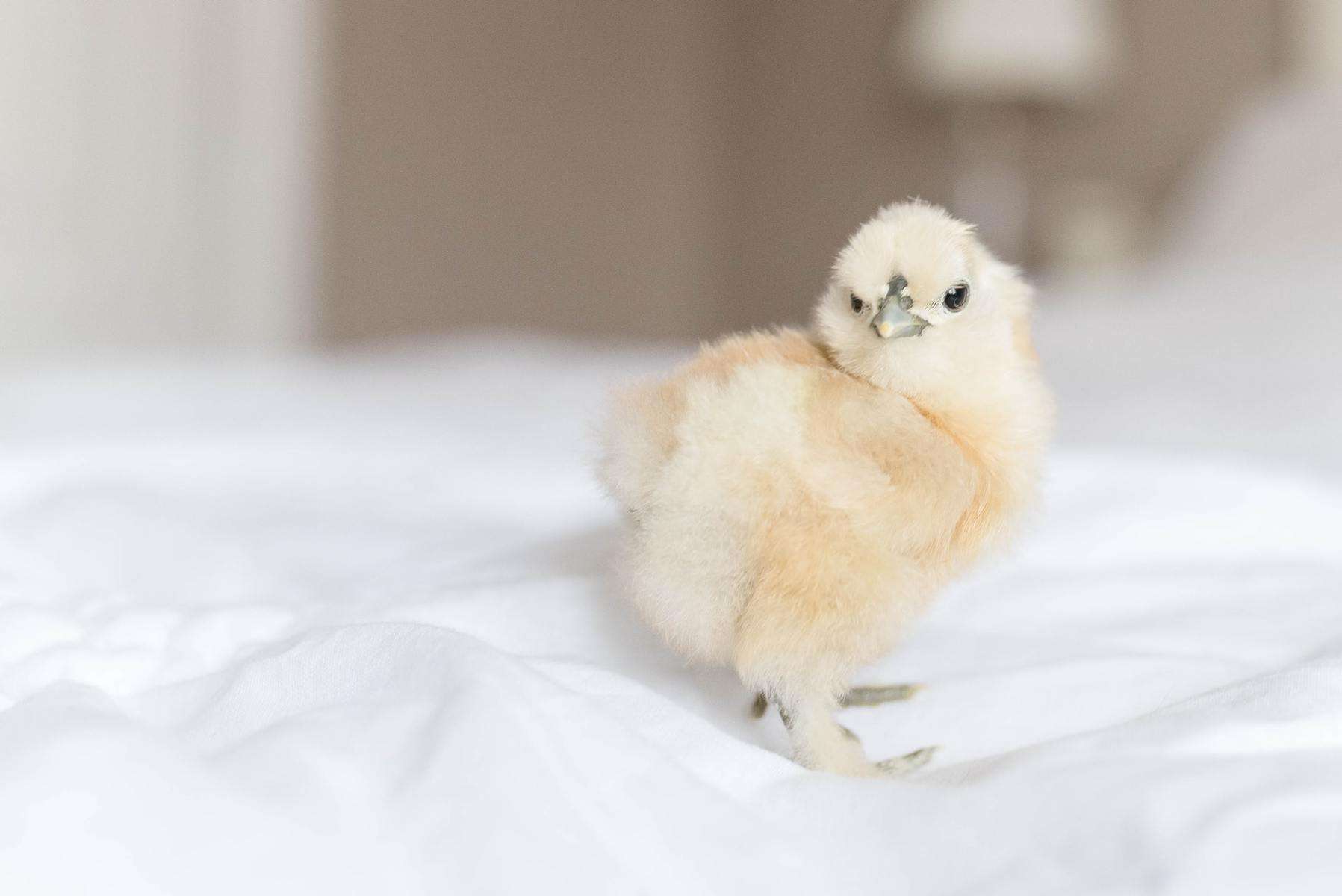
The best part about taking care of Silkie chickens is definitely the fact that despite being considered to be ornamental birds, they are actually quite low-maintenance birds, which is very unheard of for this category of chicken breed.
While they do need a bit of room to run around in due to how energetic they are, they don’t necessarily require their confinement to be as large as you’d think due to their small size. We are still talking about very small chickens here, so they will not need more than some other breeds out there to live in.
As far as their habitat is concerned though, you will need to make sure that they get plenty of exercise to keep them safe and healthy. As such, around 3 square feet per chicken is definitely going to give them ample room to run around in and that’s really all they ask for from you.

Their coop should be around 6 square feet or so large per chicken, and this is yet again due to just how energetic they can really be as you don’t want them bumping into one another at all times.
If you do prefer to keep them free-range though, just know that you will need to invest heavily into chicken wire fencing so that no potential predators such as dogs or foxes could come on through to get their next meal from your hard work.
As far as what your habitat needs to have in it though, as long as your Silkies have a good range of grass, food and water they should be fine with just that.
What Should You Feed Silkie Chickens?

As far as their general diet is concerned, Silkie chickens can consume a rather large variety of grains, including cracked wheat, oats, barley and corn altogether.
Just give your Silkie chicken around ½ cup of grains every day, but keep in mind that if your chickens are free-range then you may want to lower that by quite a bit considering the fact that they already consumed plenty of worms and bugs on their way there.
You also need to scatter their grains around as you feed them just so you can encourage their natural foraging skills so they don’t expect the food to just fall at their tiny feet.
As far as treats go, we heavily recommend that you give them both veggies and fruit scraps to make sure that they know that they are precious to you and so that they can look forward to the next time you come around to greet them or take care of them.
Are Silkie Chickens Noisy?
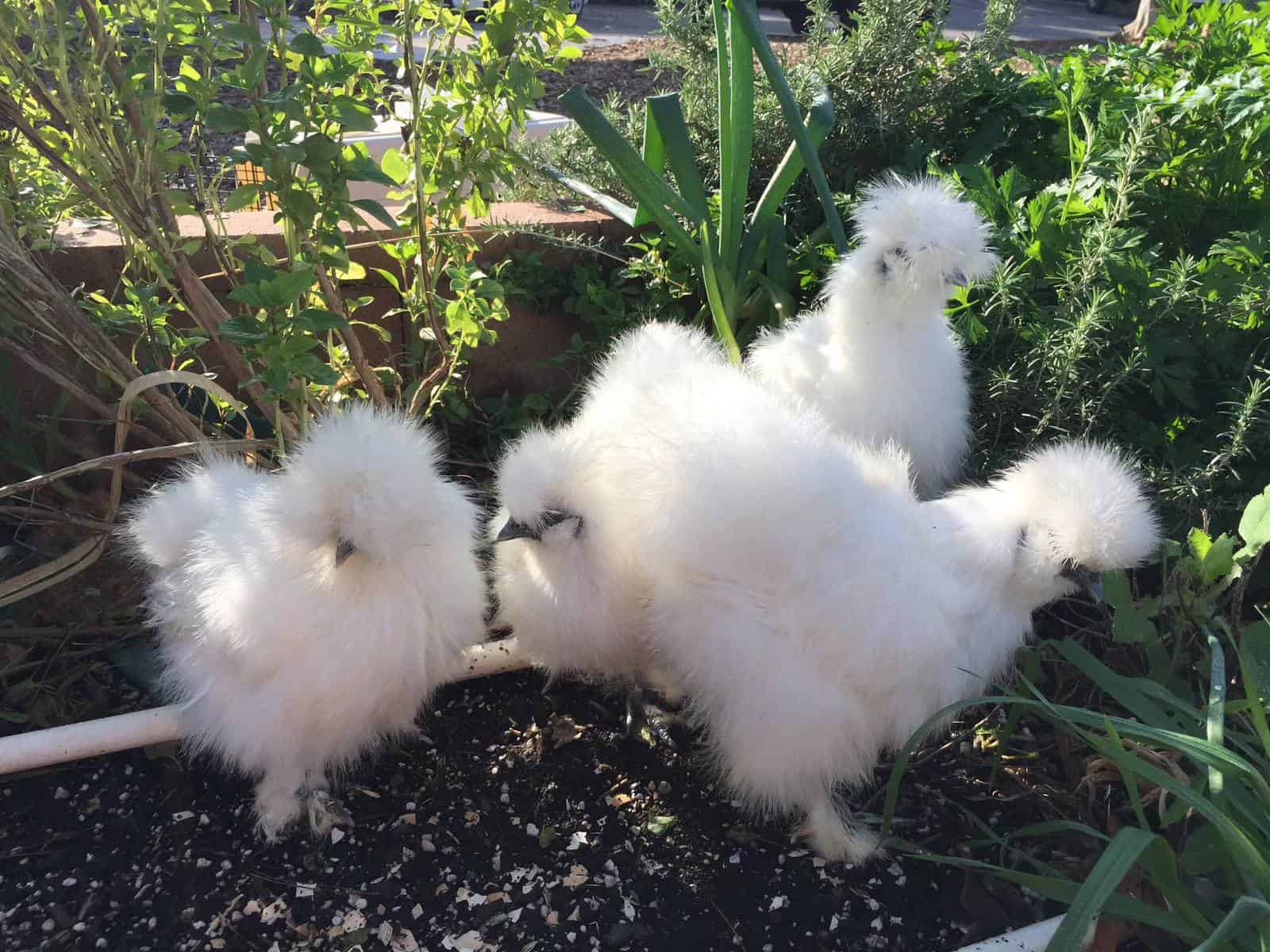
This is yet another great part about Silkie chickens, as they are actually not noisy in the slightest, which only adds to their viability for city folk to own.
If you for example live in an apartment or in an urban environment and you want to take care of a strange and unique new pet, you should definitely consider getting a Silkie chicken just because they are rarely if ever super loud, with the only exception being when they are really hungry.
Just make sure that they have plenty of room to move around in and also, don’t forget to clean up after them every single day, so that they don’t end up getting used to sleeping in muck.
Should You Get a Silkie Chicken?
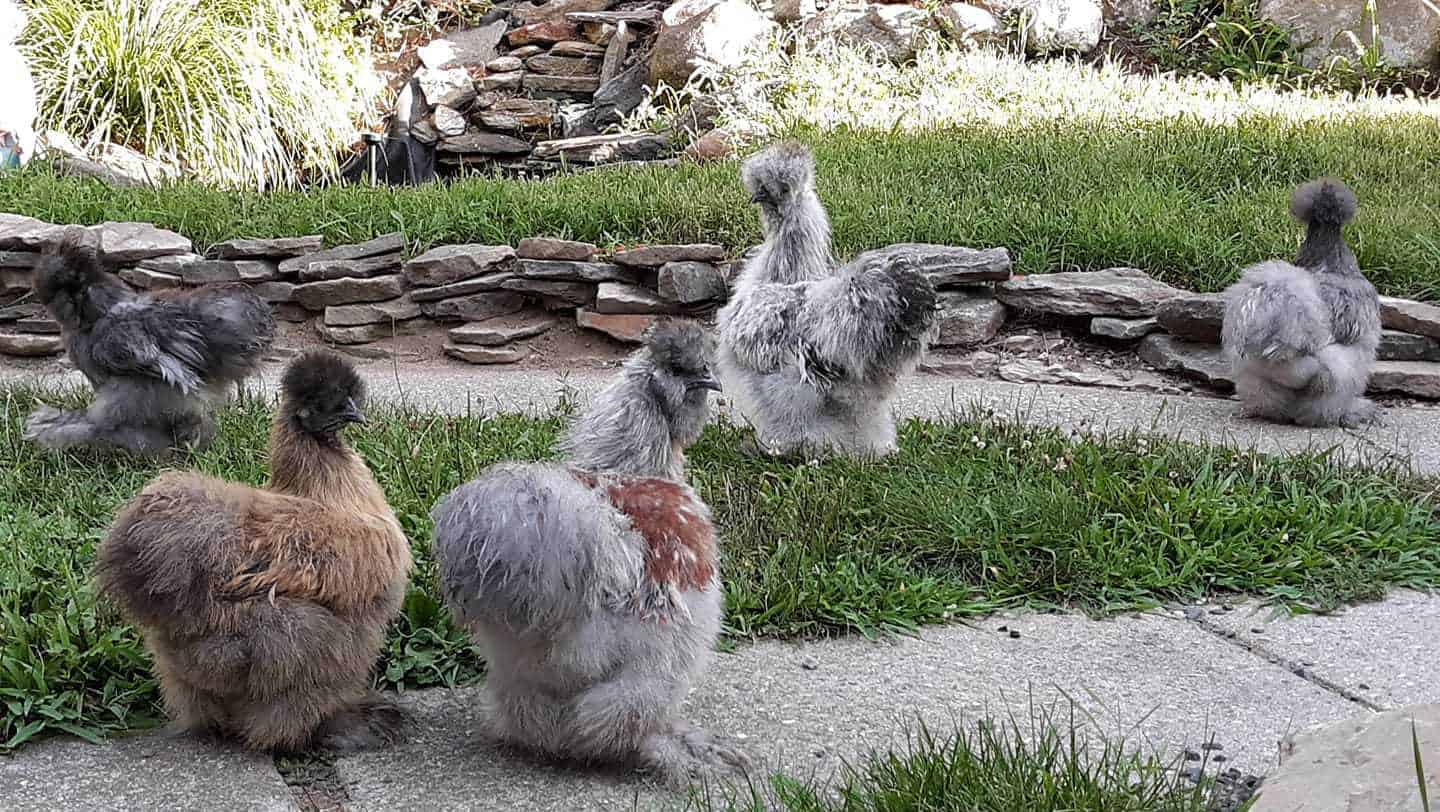
In order to answer this question, we will need to give you a brief rundown of every one of their pros and cons so that you understand exactly what you’re getting with your money.
So, as far as their pros go, these are the most notable elements we could think of:
- They are great with kids
- They make for some incredibly unique and loving pets
- They live for a very long time
- They are rarely going to instigate fights with other pets or any other chickens
- They are great mothers both for their own chicks or any other small chicks around them
As far as the cons go though, this is something you will need to keep in mind:
- They are very susceptible to a ton of diseases, including Marek’s disease
- They are not very cold resistant
- They are nowhere near the best egg-layers you could buy
- They can be susceptible to lice or mites due to the furry aspect of their feathers
- They are quite broody
Conclusion
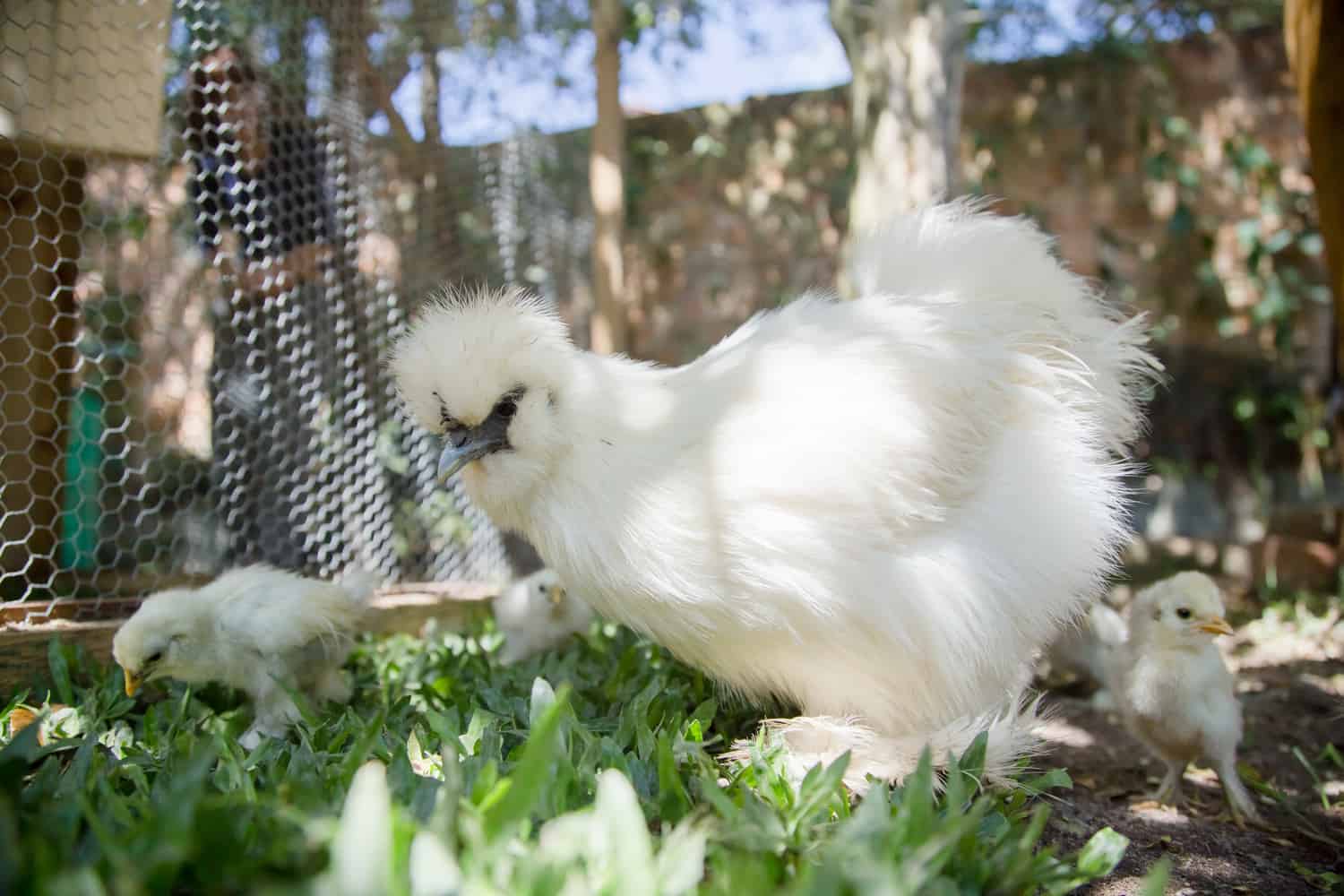
So, what can we really say about this awesome breed that we haven’t said already by now? You should already know by now whether this is the right breed for you and if you are still not sure, then how about you check out some more pictures of them, both adult and chick alike to make sure you’re making the right move?
Just remember that the typical Silkie Chicken lives for quite a long period of time, so if you are looking for a nice gift to give to your children for now and then forget about after a couple of months then this will definitely not be the right choice for you.
This chicken breed is an absolute treat to have around and if you do decide to get one, don’t forget to pick it up and stroke its furry head as much as possible, because they just can’t get enough of it. Thank you for reading and good luck with your coop!
Contents
- The Silkie Chickens Appearance
- How Much Money do Silkie Chickens Cost?
- How Much do Silkie Chickens Weigh?
- What Color Varieties Do Silkie Chickens Come In?
- How Do Silkie Chickens Behave?
- How Many Eggs Can I Expect from Silkie Chickens?
- How to Take Care of Silkie Chickens
- What Should You Feed Silkie Chickens?
- Are Silkie Chickens Noisy?
- Should You Get a Silkie Chicken?


